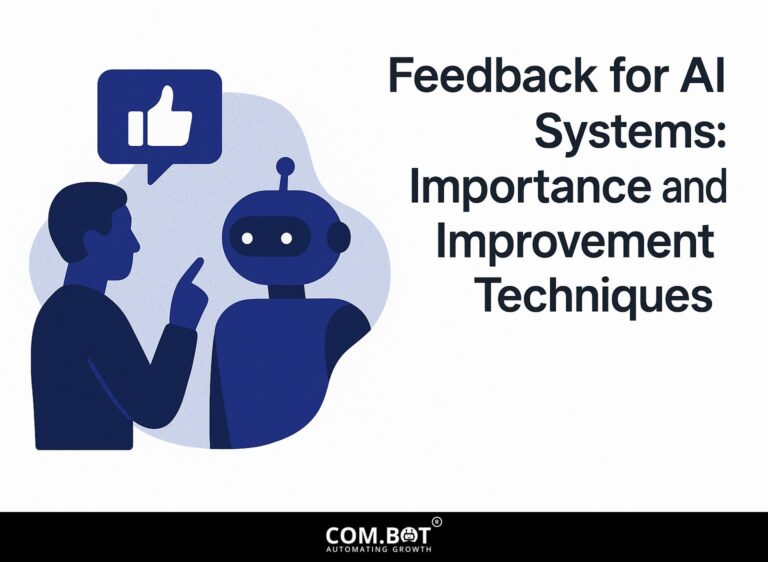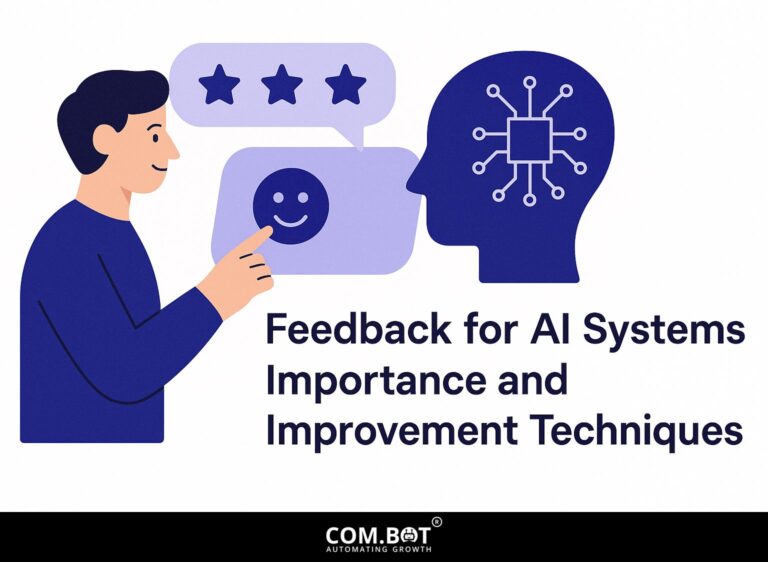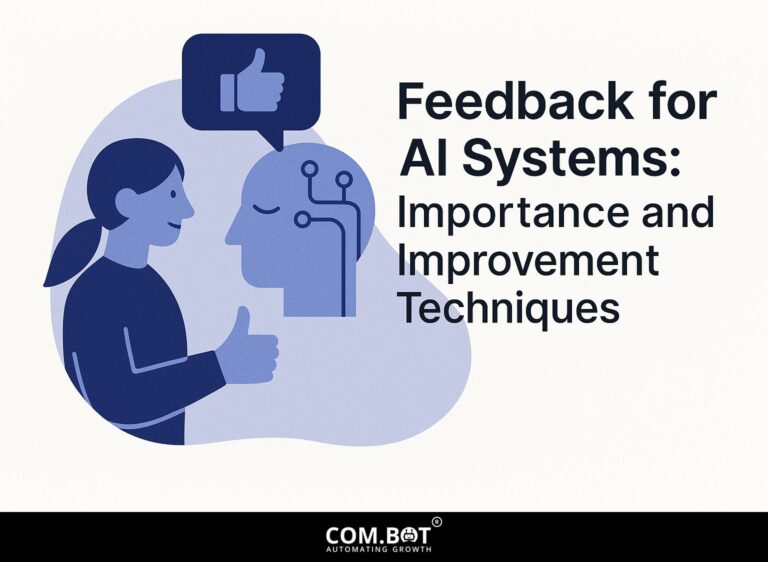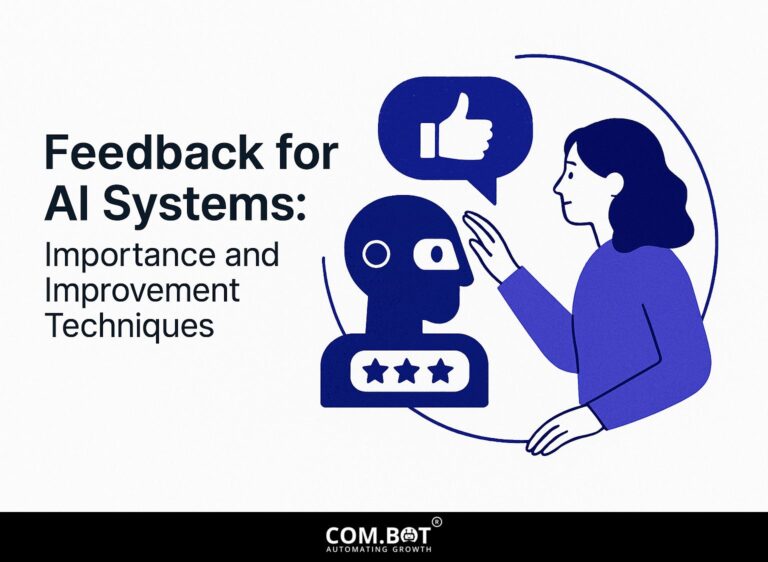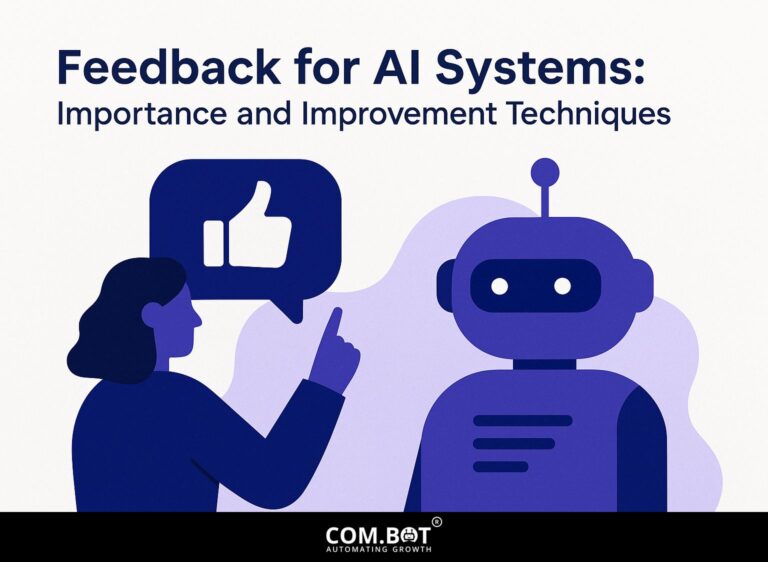Feedback for AI Systems: Importance and Improvement Techniques
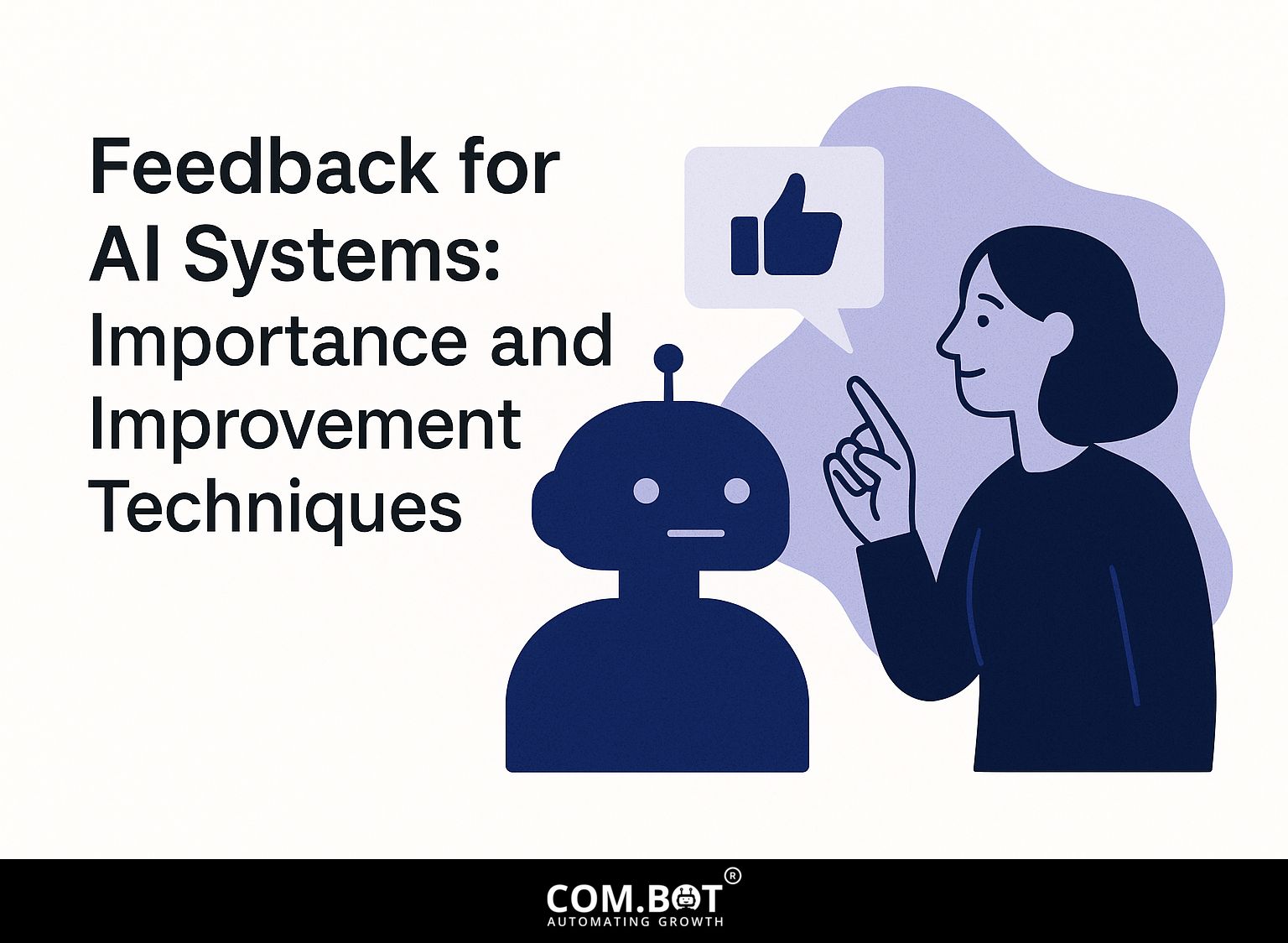
The rapid advancements in artificial intelligence highlight the need to use feedback to make AI systems more accurate and reliable. Organizations need to focus on strong tracking systems to check how well techniques are working and improve methods for reinforcement learning. This article looks at the importance of feedback in AI, explaining ways to improve it and the problems that come up. By learning about these parts, you can help create more reliable and effective AI technologies that satisfy user needs.
Key Takeaways:
- 1 Importance of Feedback in AI
- 2 AI Feedback Impact Statistics
- 3 Types of Feedback Mechanisms
- 4 Techniques for Improving Feedback Systems
- 5 Challenges in Implementing Feedback
- 6 Future Directions for AI Feedback
- 7 Frequently Asked Questions
- 7.1 What is the importance of feedback for AI systems?
- 7.2 How does feedback improve AI systems?
- 7.3 What are some common techniques for providing feedback to AI systems?
- 7.4 Why is it important for AI systems to receive feedback from diverse sources?
- 7.5 Can feedback be used to improve the ethics of AI systems?
- 7.6 How can organizations encourage users to provide feedback for AI systems?
Definition and Purpose
AI feedback systems collect and use user feedback to change algorithms and improve AI. This is important for organizations aiming to stay competitive.
For example, Amazon employs AI feedback systems to gauge customer satisfaction through product reviews and ratings.
By analyzing this data, they adjust product recommendations and search algorithms, enhancing user experience.
They implement A/B testing, where different user interfaces are presented to select groups, allowing them to determine which variations lead to higher engagement.
This repeated process improves AI performance and increases sales, highlighting the important role of user feedback in improving artificial intelligence solutions. For an extensive analysis of how feedback enhances AI systems, explore our comprehensive study on the importance and improvement techniques.
Historical Context
The evolution of AI feedback systems traces back to the early adoption of machine learning algorithms in the 1990s, leading to significant advancements in predictive capabilities.
In the 2000s, the introduction of reinforcement learning marked a turning point, enabling systems to learn from their actions and improve over time.
Notable milestones include IBM’s Watson, which demonstrated advanced natural language processing by winning Jeopardy! in 2011.
Lately, deep learning methods have greatly improved AI feedback systems, leading to excellent results in recognizing images and speech. To enhance your understanding of these systems, exploring the importance and improvement techniques for AI feedback can provide valuable insight into their development.
Today, these systems are used in various fields, such as providing personalized recommendations on streaming services and enabling self-driving cars to make quick decisions.
Importance of Feedback in AI
Feedback is important in AI systems because it improves accuracy and builds user trust, leading to better satisfaction and successful operations. Additionally, understanding various feedback improvement techniques can further enhance the effectiveness of these systems.
AI Feedback Impact Statistics
AI Feedback Impact Statistics
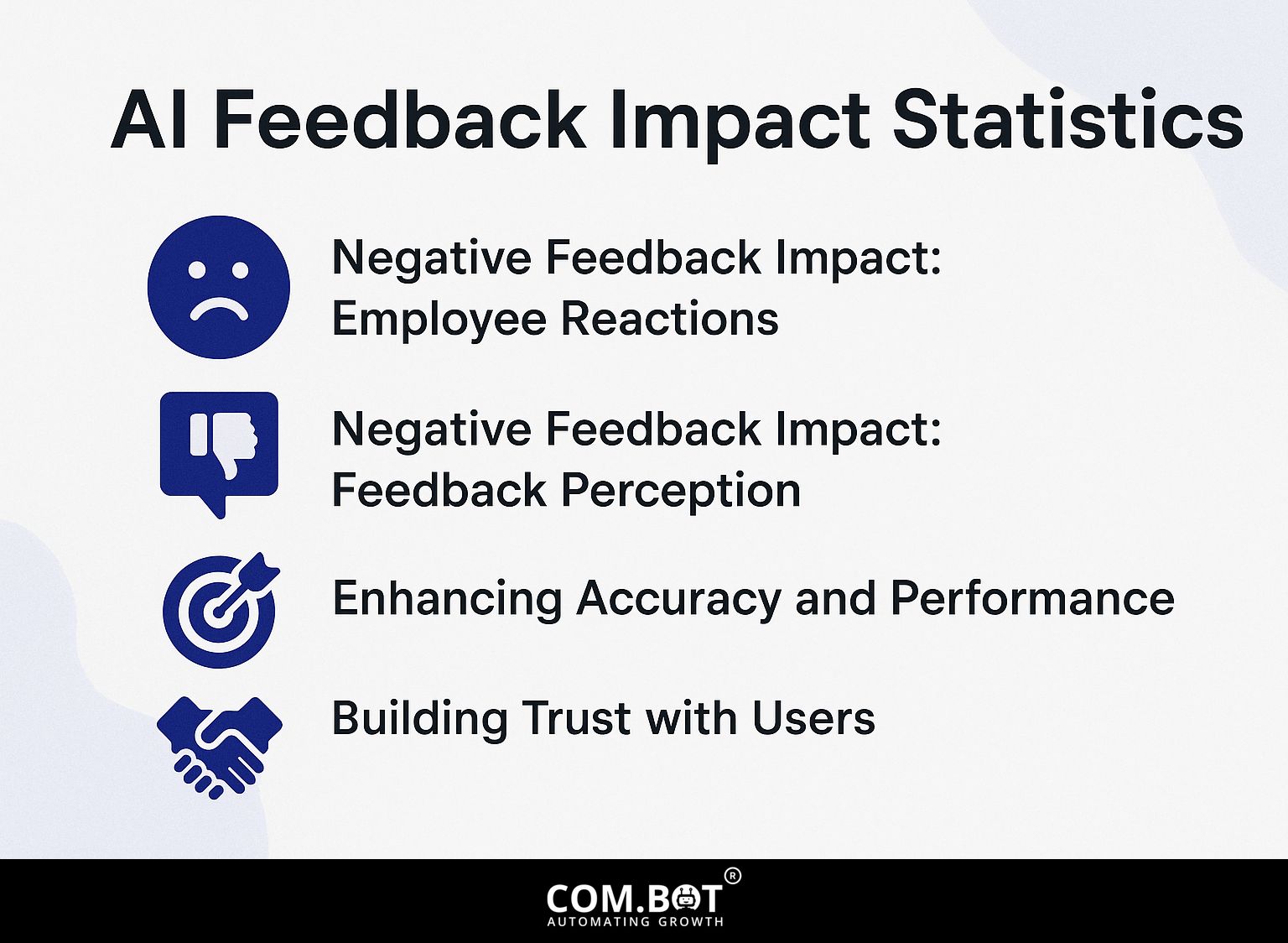
Negative Feedback Impact: Employee Reactions
Negative Feedback Impact: Feedback Perception
The AI Feedback Impact Statistics explains how feedback, especially negative feedback, influences how employees respond and think about their workplace. The information points out the differences between feedback from leaders and AI systems, and looks at how correcting bias has changed over time.
Negative Feedback Impact on Employee Reactions reveals that 53.0% of employees experience shame when receiving feedback from leaders. Human feedback can greatly influence emotions, which can, in turn, impact both morale and performance. In contrast, AI-provided feedback impacts self-efficacy positively at 56.3%. This suggests that employees may perceive AI feedback as less personal and more objective, allowing them to focus on self-improvement rather than emotional responses.
- Feedback Perception: After AI interaction, 38.2% Most financial manager jobs are given to white men, showing ongoing bias in how decisions are made. This statistic highlights the importance of tackling hidden bias in AI systems to promote diversity in leadership positions. Additionally, the average correction of bias over time is noted at 5.03, indicating gradual improvements in mitigating biases within AI feedback mechanisms.
The information indicates that AI feedback can increase confidence, but it is important to continuously improve AI systems to address potential biases. Organizations might benefit from training employees to interpret AI feedback constructively, alongside implementing AI systems that are regularly audited for bias. By dealing with these issues, companies can use AI feedback to create a more welcoming and productive workplace.
Enhancing Accuracy and Performance
Using effective feedback methods can increase AI performance metrics by 30%, greatly improving decision-making processes.
Companies such as Google and Netflix have successfully used user feedback to improve their AI algorithms. For instance, Google uses A/B testing to gauge user interactions with search results, adjusting algorithms based on performance metrics such as click-through rates.
Netflix looks at viewing habits and reviews to improve its suggestion system, which makes users happier.
To make similar improvements, use techniques such as:
- Regular user surveys
- Performance dashboards to track key metrics
- Engaging in repeated testing and improvement
This ongoing feedback process is important for improving accuracy and relevance in AI programs.
Building Trust with Users
Setting up a reliable feedback system builds user trust, which is very important; research indicates that 70% of users like products that change based on their feedback.
To improve your feedback process, start by using tools such as SurveyMonkey or Typeform to collect customer opinions after they make a purchase.
Use Net Promoter Score (NPS) surveys to measure customer loyalty and identify areas for improvement.
For e-commerce, consider integrating live chat options, allowing immediate feedback on product experiences. For more on the benefits, see our detailed guide on AI Bots for Customer Support.
Check customer reviews on sites like Trustpilot to learn their opinions and quickly handle any issues.
Update your products regularly based on feedback; this keeps users happy and creates long-term loyalty.
Types of Feedback Mechanisms
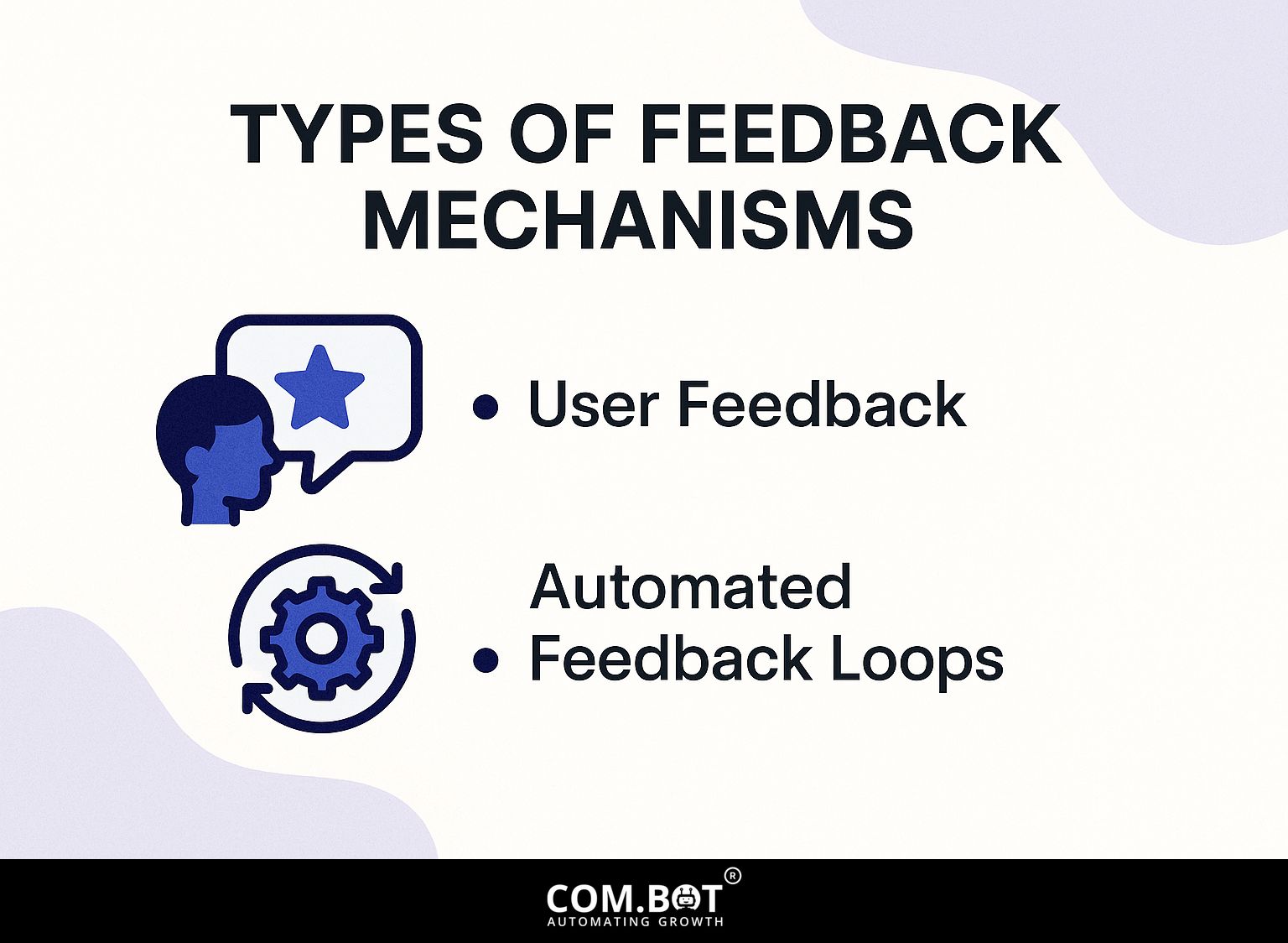
AI systems use different ways to gather feedback, like input from users and automatic feedback systems, to make their algorithms better and more accurate. This approach aligns with the principles outlined in our analysis of Feedback for AI Systems: Importance and Improvement Techniques.
User Feedback
User feedback is a direct input method, often gathered through surveys or ratings, that can result in immediate changes to AI systems, enhancing user interactions.
Using tools like SurveyMonkey, Typeform, or Google Forms makes it simple to gather user feedback and review the results.
For instance, a popular ride-sharing app used user ratings to identify pain points, leading to the implementation of an in-app support feature that reduced unresolved issues by 30%. In a similar way, a top e-commerce site used customer feedback to improve its recommendation system, which led to a 20% rise in user interaction.
Regularly analyzing feedback helps prioritize improvements that align closely with user needs.
Automated Feedback Loops
Automated feedback systems gather data all the time, allowing AI systems to change instantly, demonstrating a self-improving process much like the one used in self-driving car technologies.
These feedback loops use sensors and algorithms to gather information about how the vehicle is performing and the driving conditions. For instance, companies like Tesla employ neural networks to analyze data in real-time, improving features like Autopilot.
Technological needs include strong data systems, machine learning tools (like TensorFlow), and fast communication networks. Implementing such systems can improve safety and efficiency, as seen in Uber’s real-time route adjustments, which use ongoing data analysis to change its services instantly.
Techniques for Improving Feedback Systems
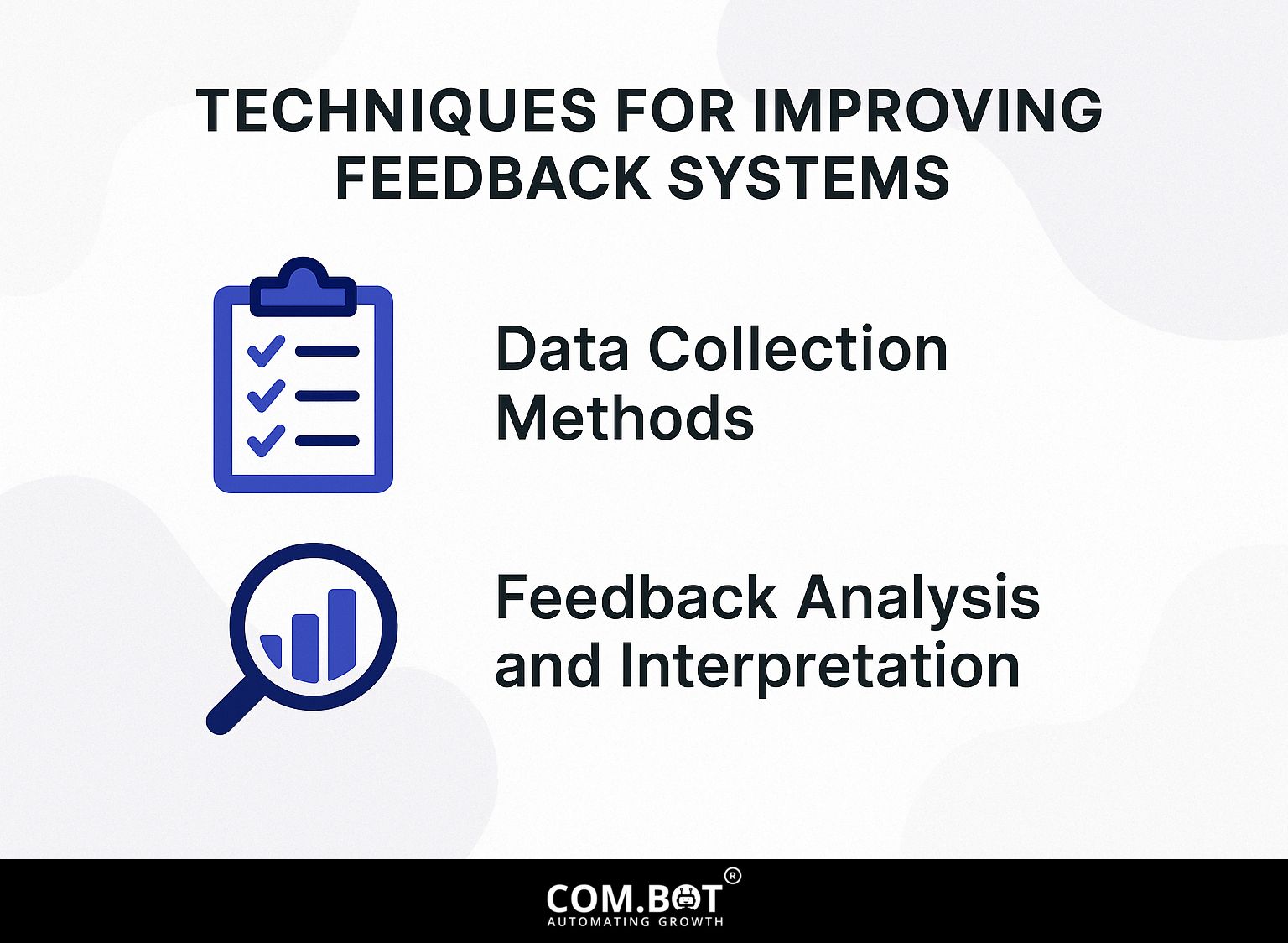
To make feedback systems better, organizations should use clear ways to collect and examine information so that feedback can be used well.
Data Collection Methods
Using both numbers and personal feedback, like data tools and talking to users, can improve the feedback quality.
For exact data, tools like Google Analytics can monitor how users interact with your website, offering numbers like page views and bounce rates.
Use qualitative methods like user interviews or surveys on platforms like SurveyMonkey to collect detailed feedback.
By analyzing both types of data, you can identify trends and understand user motivations better. This two-part method improves data quality and helps you make better decisions when changing your strategy or products.
Feedback Analysis and Interpretation
Effective feedback analysis means using visual tools like Tableau to understand data, so organizations can make decisions based on user interactions.
Using Tableau, a team can analyze user feedback by creating dashboards that illustrate trends over time. For example, they might track Net Promoter Score (NPS) responses alongside service usage data.
By filtering the NPS data to show only comments from dissatisfied users, the organization can pinpoint common pain points, such as long wait times or confusing interfaces. By combining opinions with numbers, this method pinpoints exact areas to make things better, leading to service improvements that match what users want.
Challenges in Implementing Feedback
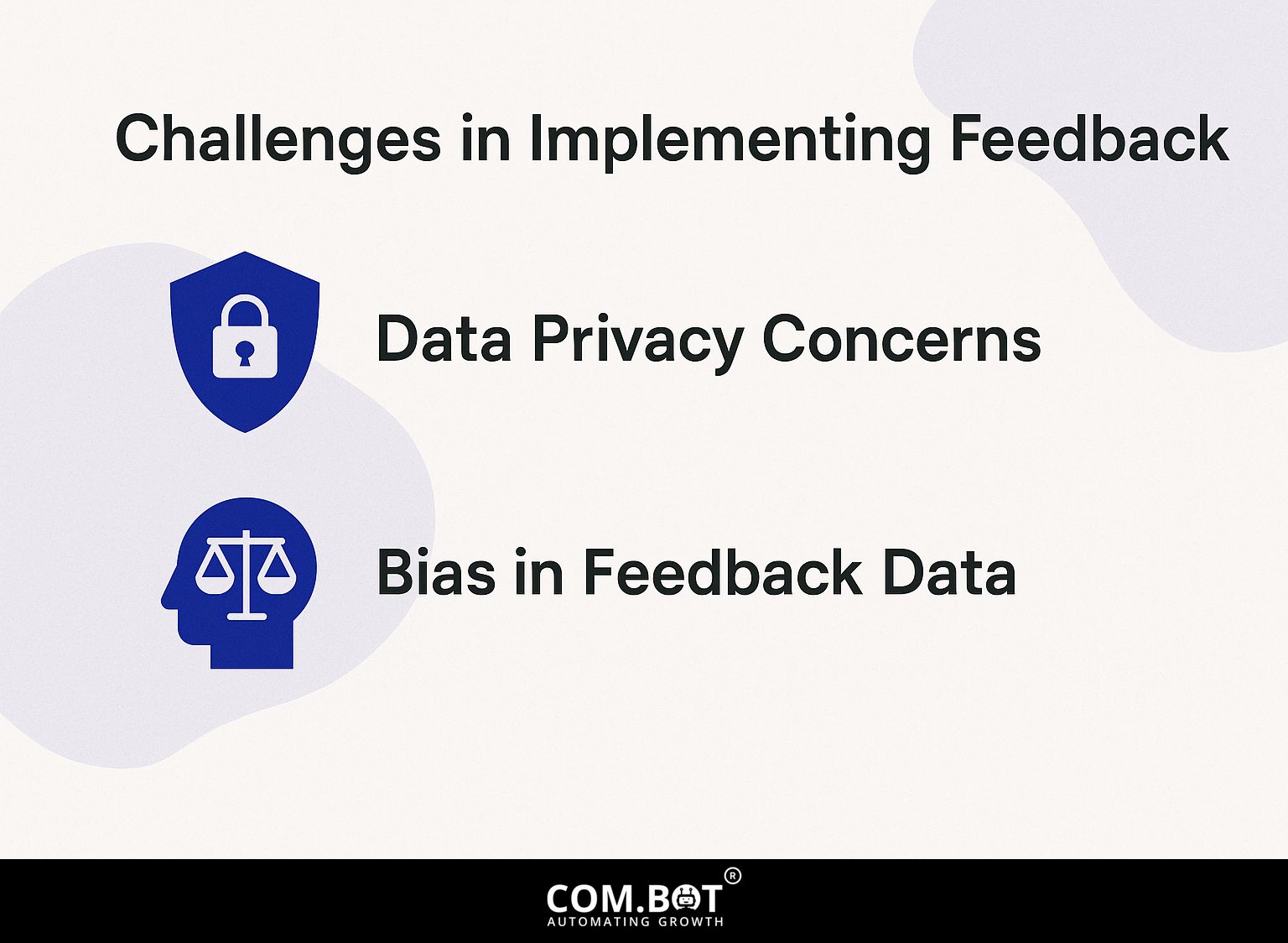
Setting up feedback systems comes with certain difficulties, such as worries about data privacy and the possibility of bias in the feedback data, both of which can reduce how well AI works.
Data Privacy Concerns
Organizations must follow data privacy rules, like GDPR, which set strict rules on how user data is collected and require openness, impacting how feedback is gathered.
To follow the rules and keep users’ trust, companies should use clear methods for getting permission.
- Begin by clearly informing users of data collection practices on your feedback forms.
- Use tools like Cookiebot or OneTrust to manage consent and track user preferences.
- Frequently check your data methods to follow the rules.
- Enable user access to their data, allowing them to modify or delete it upon request.
This method guarantees compliance and builds trust with users, which increases their willingness to provide feedback.
Bias in Feedback Data
Bias in feedback data can lead to incorrect AI outcomes; using thorough methods to identify bias is important to maintain data accuracy and make algorithms fair.
To effectively detect and mitigate biases, start by employing tools like Label Studio for data annotation. This lets you check the feedback data for inconsistencies in an organized way.
Next, analyze your dataset using methods like stratified sampling to make sure you have a variety of examples. Regularly review your work using methods like sensitivity analysis. This method examines how various inputs alter results, helping to identify hidden biases.
Using these methods creates a more balanced dataset and improves the fairness of AI algorithms.
Future Directions for AI Feedback
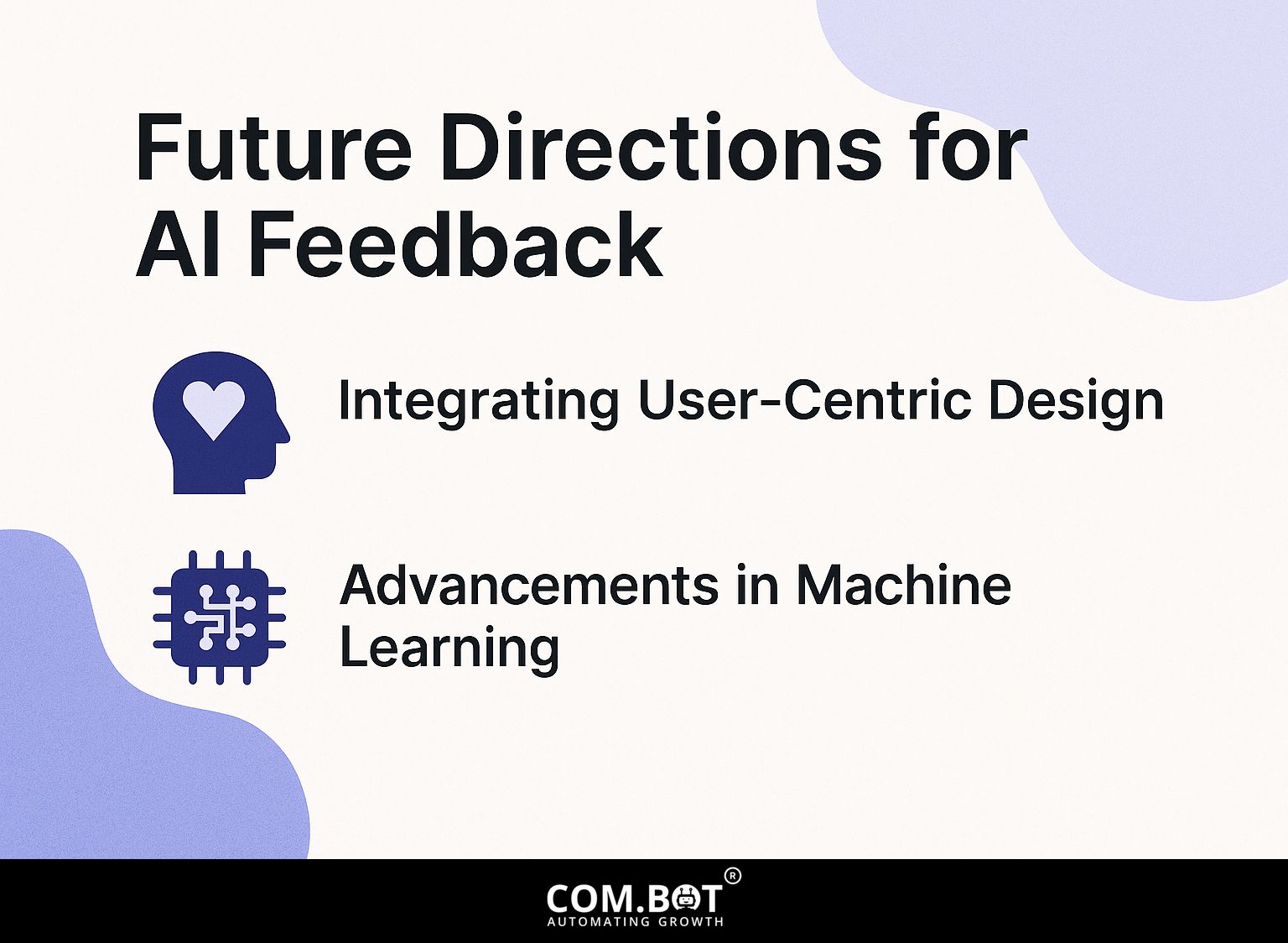
The next steps for AI feedback systems involve using design principles that focus on users and using progress in machine learning to improve how these systems adjust.
Integrating User-Centric Design
Putting user-focused design into AI feedback systems makes sure user choices come first, which increases satisfaction and involvement.
To effectively implement user-centric design, begin by involving stakeholders from various levels of your organization. Run group sessions to collect different ideas about what users want.
Next, run user tests using tools like UserTesting or Lookback to collect immediate feedback.
For example, Spotify improves its algorithm by looking at feedback from different user test groups, which allows for customized playlists.
Improve your design by using this feedback to better align it with user preferences.
Advancements in Machine Learning
Recent progress in machine learning, such as techniques that don’t require pre-labeled data, is changing how feedback systems change and get better over time.
Companies such as Spotify and Netflix use these methods to improve their recommendation systems.
For instance, Spotify analyzes listeners’ behaviors without labeled data to identify emerging music trends, enhancing user experience. Netflix uses grouping methods to sort user likes and dislikes, ensuring you receive content suggestions that fit your interests.
Using tools like TensorFlow or scikit-learn, companies can quickly create and use these models, enabling them to keep learning from user interactions. Improving these algorithms multiple times makes them work better for what users want and like.
Frequently Asked Questions
What is the importance of feedback for AI systems?
Feedback is important for AI systems because it helps them keep learning and getting better at what they do. Without feedback, AI systems would not be able to handle new situations or make correct predictions.
How does feedback improve AI systems?
Feedback helps AI systems find and fix errors or biases in their algorithms, leading to more accurate and fair results. It also lets them use new data to keep making their predictions better.
What are some common techniques for providing feedback to AI systems?
Some common techniques include providing labeled data, using reinforcement learning, and implementing active learning methods. Human experts can give feedback by checking and fixing predictions made by the AI system.
Why is it important for AI systems to receive feedback from diverse sources?
Diverse feedback helps AI systems overcome any biases that may exist in their data and algorithms. By gathering feedback from different places, AI systems can make better and more fair predictions, helping more users.
Can feedback be used to improve the ethics of AI systems?
Yes, feedback can be used to identify any biases or ethical concerns in AI systems and guide their improvement. By incorporating feedback from diverse sources, AI systems can be designed and trained to make fair and ethical decisions.
How can organizations encourage users to provide feedback for AI systems?
Organizations can incentivize users to provide feedback by offering rewards or recognition for their contributions. They can also make it easier for users to provide feedback through user-friendly interfaces and clear instructions. Companies can respond to problems or questions from users to show that their opinions matter.

